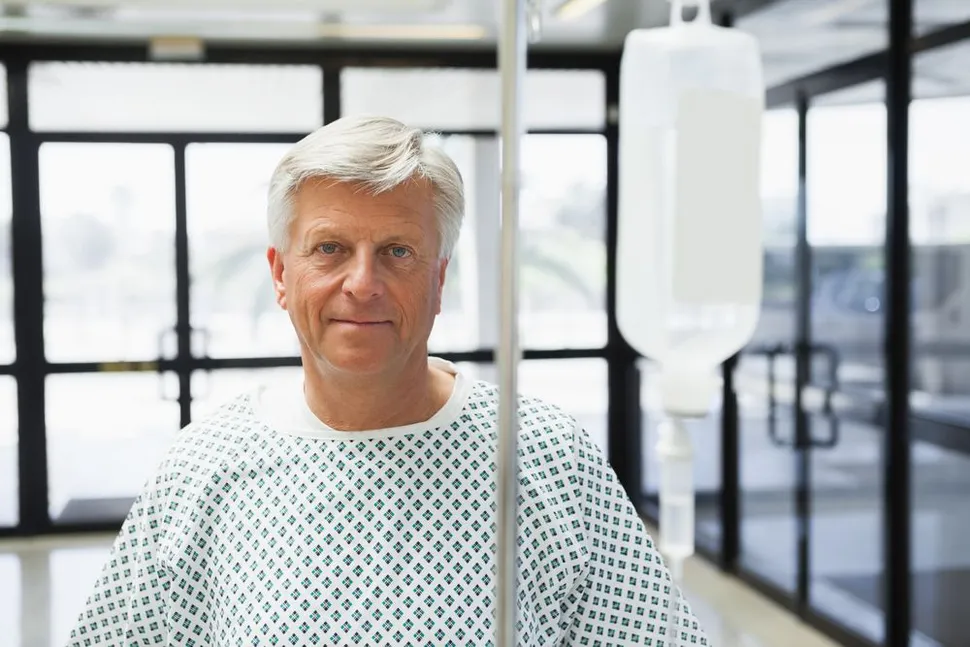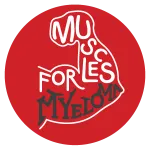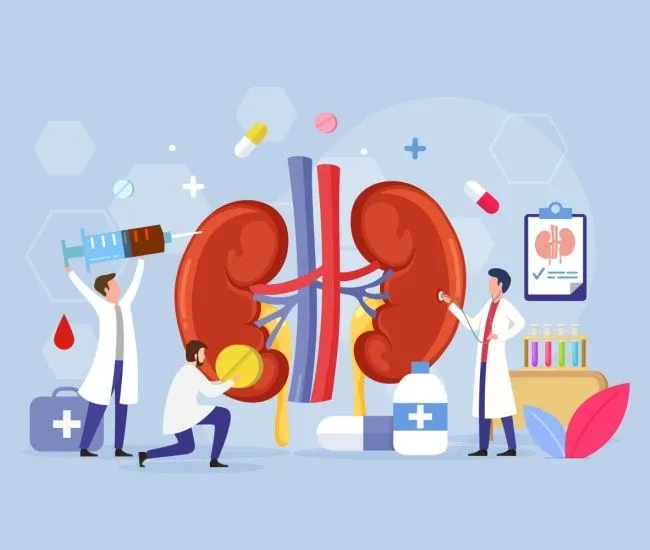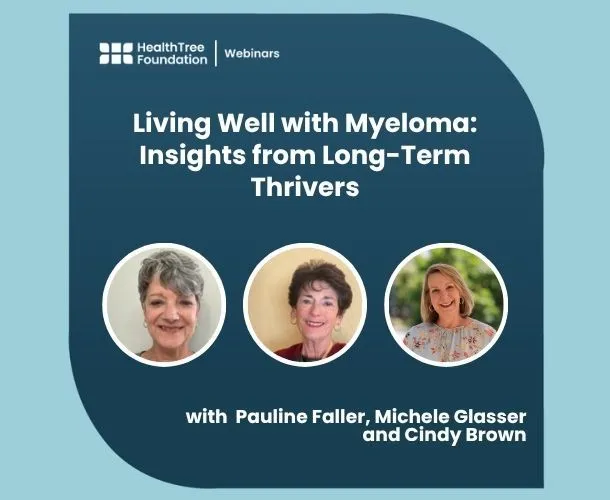Muscles for Myeloma: Exercise After Stem Cell Transplant

 BY DANNY PARKER
BY DANNY PARKERThe day after my stem cell transplant, my nurse practitioner came into my room to find me pedaling away on the stationary bike, they had procured for me. “Oh, that’s great Mr. Parker,” she announced, “you must be feeling better!” I was still tethered to the IV and its little trolley that I had nicknamed “Fred.” I shook my head. “Actually, I feel like hell,” I said slowing down, “but I’m tired of the bed. I might as well feel this way on a bike.” After a stem cell transplant, your body, if it is like mine was, will be particularly weak and fatigued. During this time, it may be very helpful to request a physical therapist to help guide you on how to condition your body. Physical therapists (PTs) are specially trained to guide people for exercises during rehabilitation. In my experience, they can be really helpful. Note that most PTs have years of training for working with patients with limitations from disease or injury. They are most often your best bet. These are quite different from personal trainers who may or may not be certified or insured. Be choosy if you want someone to help you with therapy or training. During my stem cell transplant, I felt profoundly ill. I was intensely nauseous and felt thoroughly crappy for many days following the mephalan. After the SCT, I felt profoundly fatigued, and many, like me, suffered being inactive from low blood counts, chemotherapy and the malaise brought on by that combo. A realistic goal is to improve daily functional movement. The main goal is to keep them functioning by walking and keeping limber through gentle rotation and stretches of affected muscles and joints. Still, I had no bone involvement and the staff encouraged me to wear a mask and tromp the halls of that floor. I did that, but also asked for an stationary bike to be brought in. I didn’t put in any Olympic training, but I did try to get on the bike and ride each day. After leaving the hospital, my physical therapist recommended specific exercises to help me improve mobility and strength. Check your insurance to see if a physical therapist can help you after you’re home. For me, all my ligaments were sore and my heels and feet suffered neuropathy so I wanted help with that. However, they’ll tell you it is important to avoid high impact strength training, heavy lifting or jogging. (The latter could cause damage to the spine- an area often affected by myeloma.) In any case, it is important for the therapist to help take into account any areas of bone damage in your body. In my case, they encouraged me to walk—and walk I did! After being inside a hospital for over a month, I was so delighted to be outdoors again—amazed actually. To see the sky, breath the fresh air and enjoy the view was just grand. I took walks twice a day and was each time helped by it—in mind and body. Massage can also be helpful, particularly when recuperating from pro-longed bed rest.
Thanks to our Muscles for Myeloma sponsors:


 BY DANNY PARKER
BY DANNY PARKERThe day after my stem cell transplant, my nurse practitioner came into my room to find me pedaling away on the stationary bike, they had procured for me. “Oh, that’s great Mr. Parker,” she announced, “you must be feeling better!” I was still tethered to the IV and its little trolley that I had nicknamed “Fred.” I shook my head. “Actually, I feel like hell,” I said slowing down, “but I’m tired of the bed. I might as well feel this way on a bike.” After a stem cell transplant, your body, if it is like mine was, will be particularly weak and fatigued. During this time, it may be very helpful to request a physical therapist to help guide you on how to condition your body. Physical therapists (PTs) are specially trained to guide people for exercises during rehabilitation. In my experience, they can be really helpful. Note that most PTs have years of training for working with patients with limitations from disease or injury. They are most often your best bet. These are quite different from personal trainers who may or may not be certified or insured. Be choosy if you want someone to help you with therapy or training. During my stem cell transplant, I felt profoundly ill. I was intensely nauseous and felt thoroughly crappy for many days following the mephalan. After the SCT, I felt profoundly fatigued, and many, like me, suffered being inactive from low blood counts, chemotherapy and the malaise brought on by that combo. A realistic goal is to improve daily functional movement. The main goal is to keep them functioning by walking and keeping limber through gentle rotation and stretches of affected muscles and joints. Still, I had no bone involvement and the staff encouraged me to wear a mask and tromp the halls of that floor. I did that, but also asked for an stationary bike to be brought in. I didn’t put in any Olympic training, but I did try to get on the bike and ride each day. After leaving the hospital, my physical therapist recommended specific exercises to help me improve mobility and strength. Check your insurance to see if a physical therapist can help you after you’re home. For me, all my ligaments were sore and my heels and feet suffered neuropathy so I wanted help with that. However, they’ll tell you it is important to avoid high impact strength training, heavy lifting or jogging. (The latter could cause damage to the spine- an area often affected by myeloma.) In any case, it is important for the therapist to help take into account any areas of bone damage in your body. In my case, they encouraged me to walk—and walk I did! After being inside a hospital for over a month, I was so delighted to be outdoors again—amazed actually. To see the sky, breath the fresh air and enjoy the view was just grand. I took walks twice a day and was each time helped by it—in mind and body. Massage can also be helpful, particularly when recuperating from pro-longed bed rest.
Thanks to our Muscles for Myeloma sponsors:


about the author
Jennifer Ahlstrom
Myeloma survivor, patient advocate, wife, mom of 6. Believer that patients can contribute to cures by joining HealthTree Cure Hub and joining clinical research. Founder and CEO of HealthTree Foundation.
More on Navigating Your Health
Trending Articles




Get the Latest Multiple Myeloma Updates, Delivered to You.
By subscribing to the HealthTree newsletter, you'll receive the latest research, treatment updates, and expert insights to help you navigate your health.
Together we care.
Together we cure.
3x Faster.













